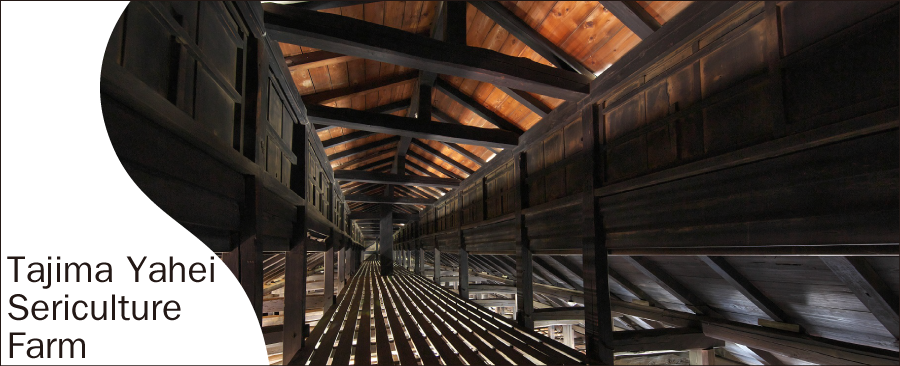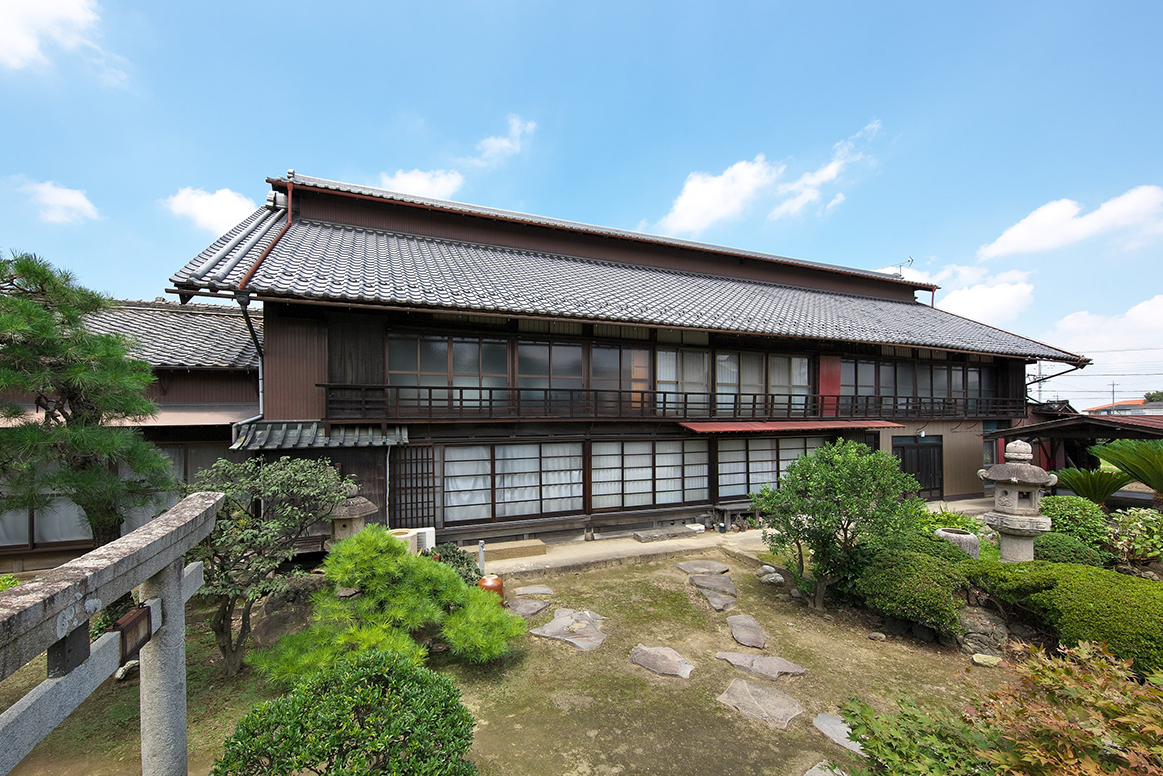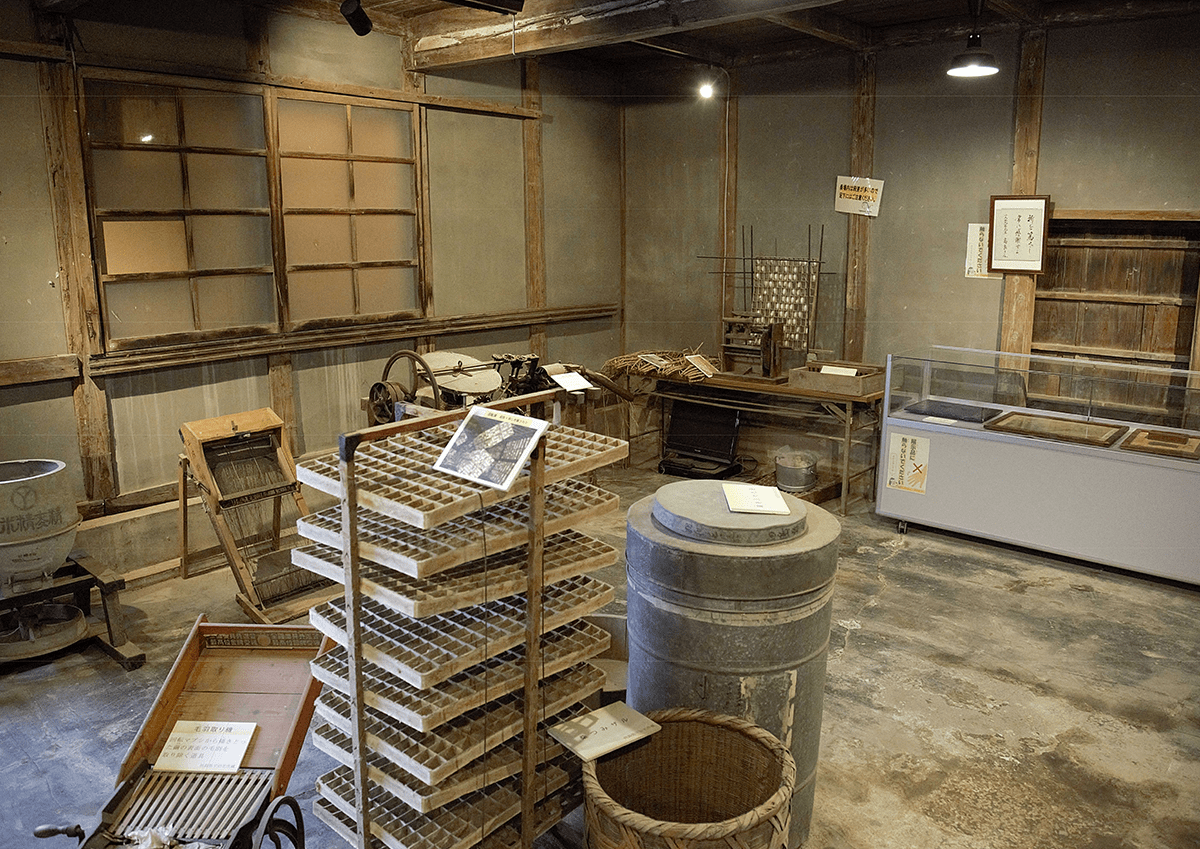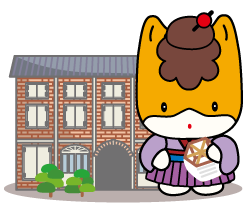
Silk was an important export commodity for Japan even before industrialized production began. As demand rose, sericulturists sought to improve silkworm cultivation to increase the number of cocoons produced and improve the quality of the thread.

Adapting sericulture techniques
The farmhouse built in 1863 by Tajima Yahei (1822–1898) in the village of Sakai-Shimamura in the southern part of Gunma Prefecture is one of the earliest examples of architecture designed to improve sericulture. Silkworms were important to this area; mulberry bushes thrived in the sandy soil, providing ample feed for silkworms, and the farmers used the attics of their houses for this cottage industry.
Yahei realized that silkworms grew better in a well-ventilated environment. When he added a koshi-yane (a raised section extending the length of the ridge pole) to his roof to improve air circulation, he found it increased the silkworm survival rates. His innovation became common practice, and even today Japanese farmhouses where silkworms were once raised are easily identified by this distinctive roofline.

Research and storage facilities
Yahei had a small laboratory where he researched silkworm hybridization and silkworm diseases with the aid of a microscope, which was unusual in Japan at the time.
Some of the farm’s sericulture buildings remain, including a mulberry leaf storage shed, a separate building where silkworms were raised, and an egg storehouse. Period tools and equipment used in sericulture are on display.

Visitor Information
- Address : Sakai-Shimamura, City of Isesaki
- By train : 22min. by Taxi from Isesaki Stn. or 20min. by Taxi from Honjo Stn.
- By car : 20 min. from Honjo-Kodama IC on Kanetsu-express way
- Visit : Private Property, exterior view only
Contact : Cultural property Protection Division,
The board of education, City of Isesaki
Tel : +81-(0)270-75-6672














